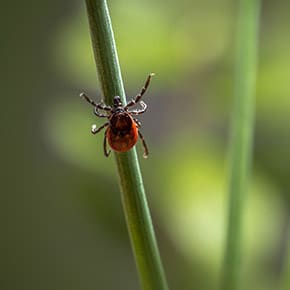- Lyme Disease
- What causes Lyme Disease?
What causes Lyme Disease?
What causes Lyme Disease?
Lyme disease, or borreliosis, is triggered by the bacterium Borrelia burgdorferi, or similar newly discovered strains such as Borellia Miyamotoi, or Borellia Recurrentis.
When infected blacklegged deer ticks bite a human they often transmit this bacteria along with other co-infections such as Babesia, Bartonella, Ehrlichia, Anaplasma, Rickittsea (Rocky Mountain Spotted Fever), and Tularemia. That human will react much more intensely to this infection if he or she has:
- weakened immunity
- inhibited cellular function and protection
- systemic bacterial infection
- high stress lifestyle
- mold or parasite exposure
- accumulated heavy metal toxicity (mercury, lead, organophosphates, etc.)
The diagnosis “Post Lyme Disease Syndrome” is given to patients when they continue to have symptoms after 30-60 days of antibiotic treatment. Research shows that at least 30% of patients experience chronic symptoms after being treated. We believe that “Post Lyme Disease Syndrome” can be caused by:
- inadequate Lyme treatment: effective treatment requires a precise combination of protocols and durations
- failure to identify and treat co-infections: proper treatment requires accurate testing for each individual co-infection – treatment cannot be determined if the cause is unknown
- lack of biofilm treatment: this leads to antibiotic resistance, poor herbal penetration, and shielding from the body’s immune defenses
- lack of detoxification support: detoxing clears residual biotoxins and DNA that triggers a persistent immune response (a “true” case of Post Lyme Disease Syndrome)
-
{{#owner}}
-
{{#url}}
{{#avatarSrc}}
{{name}} {{/url}} {{^url}} {{#avatar}} {{& avatar}} {{/avatar}} {{name}} {{/url}} - {{/owner}} {{#created}}
- {{created}} {{/created}}
























